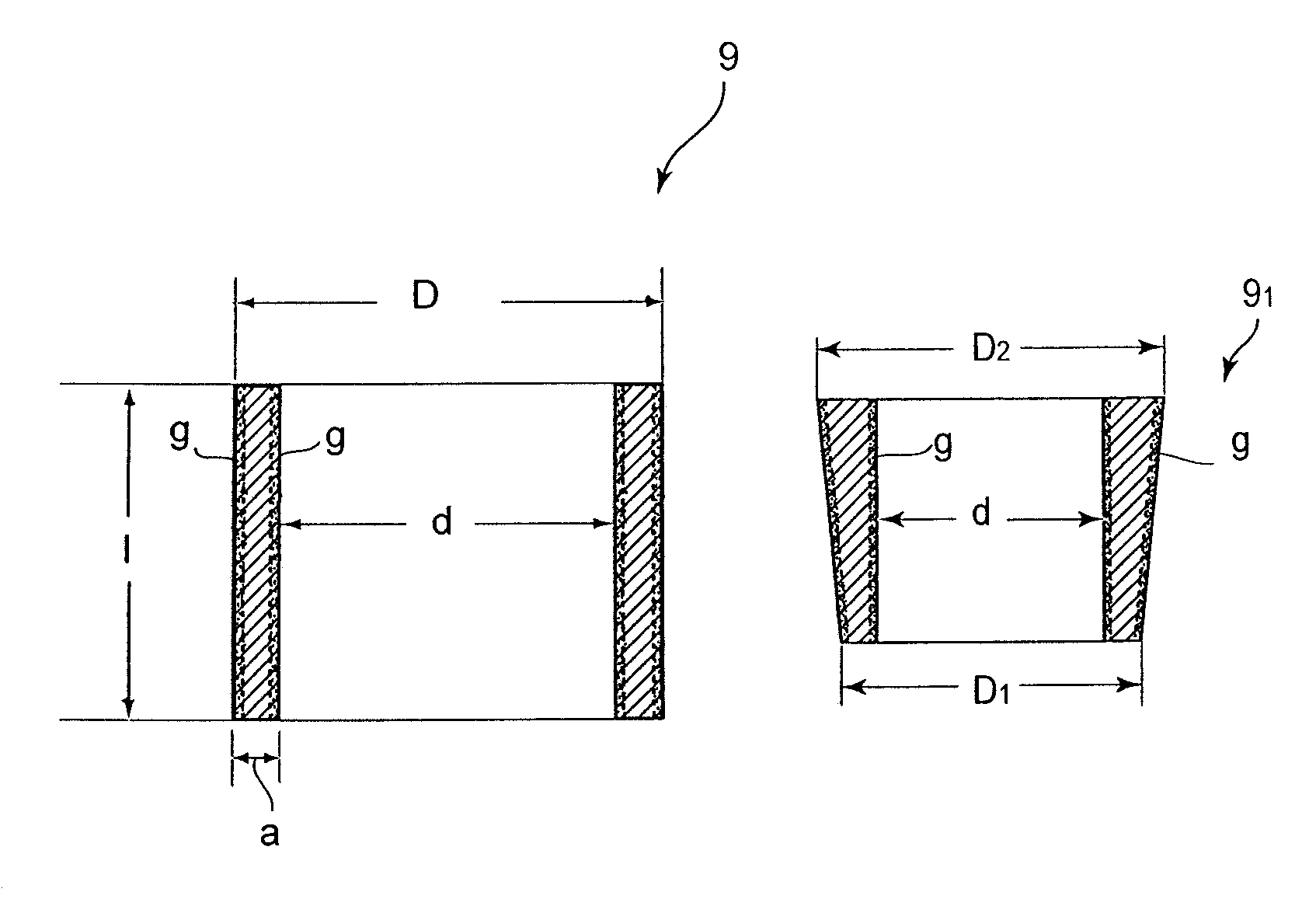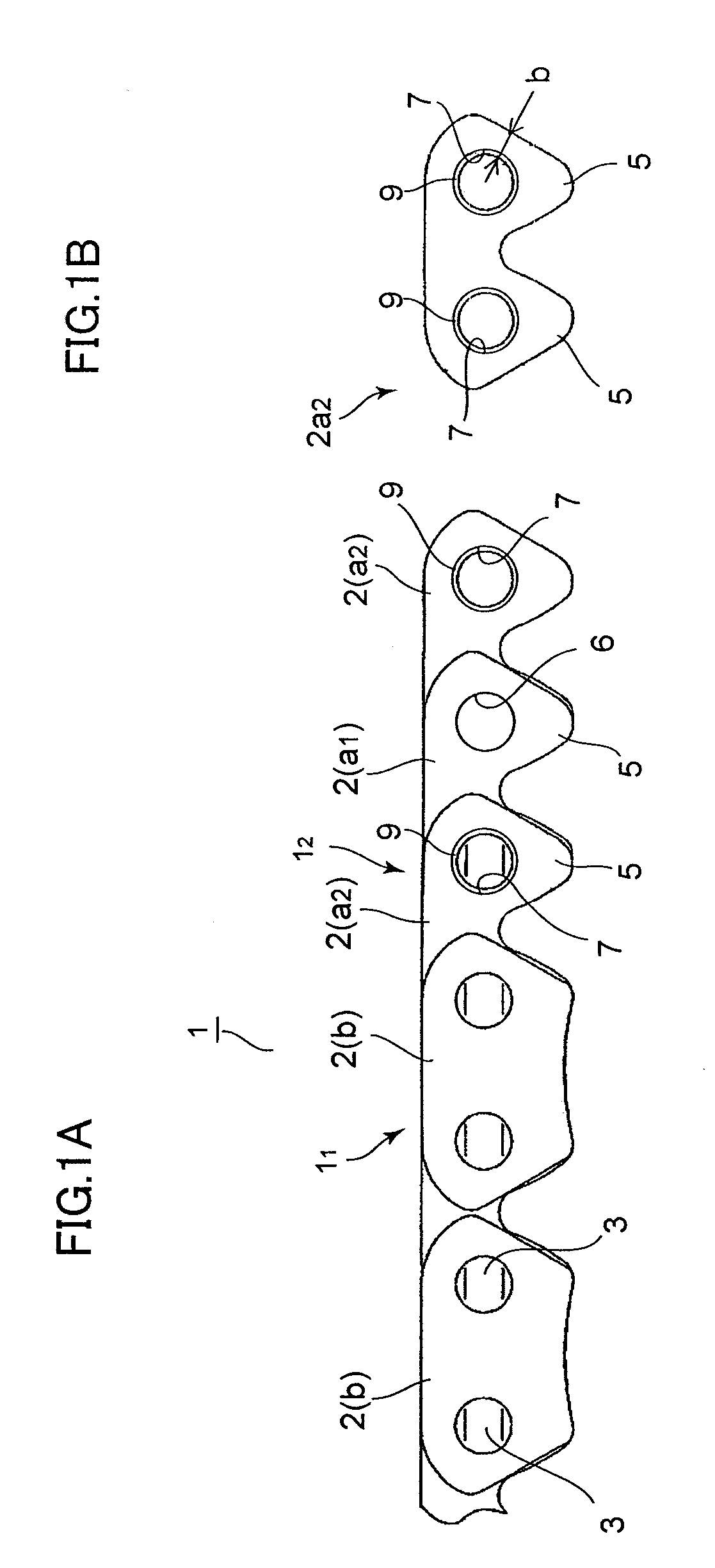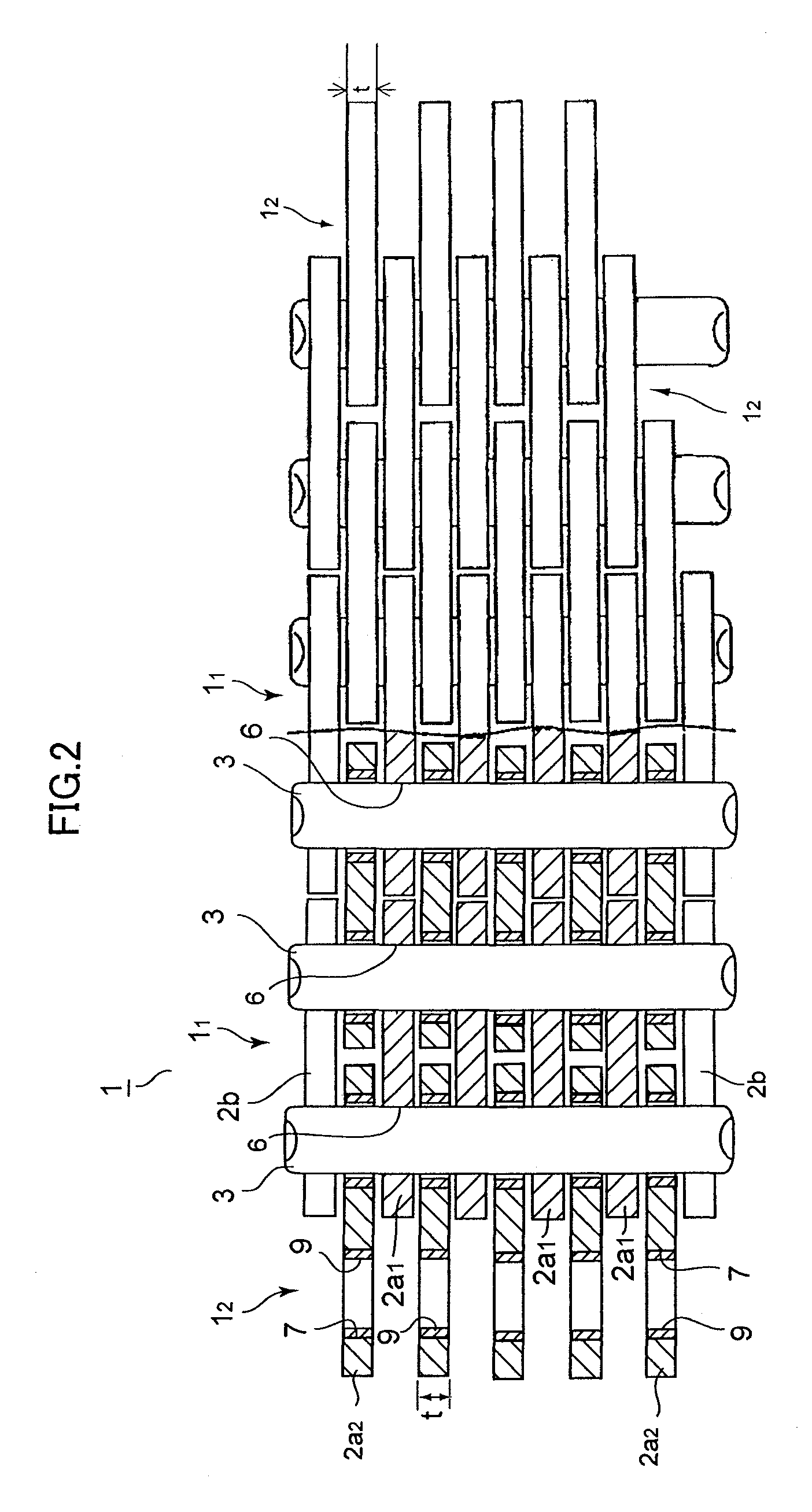Link chain
a technology of link chain and sprocket, which is applied in the field of link chain, can solve the problems of reducing the life of the whole system, reducing the and reducing the contact between the members. the effect of quick wear and elongation of the chain
- Summary
- Abstract
- Description
- Claims
- Application Information
AI Technical Summary
Benefits of technology
Problems solved by technology
Method used
Image
Examples
Embodiment Construction
[0051]An embodiment of the present invention will be explained below with reference with reference to the drawings. While there are a silent chain, a leaf chain and others as a link chain in which a large number of link plates are linked by pins, the silent chain will be explained below as the embodiment of the invention. As shown in FIGS. 1 and 2, the silent chain 1 is composed of a large number of link plates 2 alternately linked by pins 3 endlessly. The link plates include link plates 2a having teeth 5 and guide link plates 2b having no teeth.
[0052]Still more, the pin 3 is fixed to the guide link plate 2b by caulking. Guide link ranks (non-turning link ranks) 11 in the same rank with the guide link plate in the width direction of the chain and non-guide link ranks (turning link ranks) 12 having no guide link plate are alternately linked by the pins 3. In the present embodiment, the guide link rank 11 is composed of six link plates including the guide link plates 2b and the non-gu...
PUM
| Property | Measurement | Unit |
|---|---|---|
| thickness | aaaaa | aaaaa |
| thickness | aaaaa | aaaaa |
| temperature | aaaaa | aaaaa |
Abstract
Description
Claims
Application Information
 Login to View More
Login to View More - R&D
- Intellectual Property
- Life Sciences
- Materials
- Tech Scout
- Unparalleled Data Quality
- Higher Quality Content
- 60% Fewer Hallucinations
Browse by: Latest US Patents, China's latest patents, Technical Efficacy Thesaurus, Application Domain, Technology Topic, Popular Technical Reports.
© 2025 PatSnap. All rights reserved.Legal|Privacy policy|Modern Slavery Act Transparency Statement|Sitemap|About US| Contact US: help@patsnap.com



